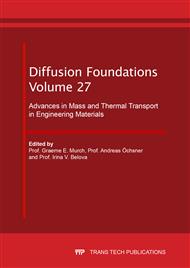p.73
p.90
p.99
p.115
p.122
p.136
p.166
p.177
p.186
Numerical Modeling of Heat and Mass Transport with Inner Heat Exchange in Unsaturated Porous Media
Abstract:
We are focused to the numerical modelling of heat, contaminant and water transport in unsaturated porous media in 3D. The heat exchange between water and porous media matrix is taken into the account. The determination of heat energy transmission coefficient and matrix heat conductivity is solved by means of inverse problem methods. The mathematical model represents the conservation of heat, contaminant and water mass balance. It is expressed by coupled non-linear system of parabolic-elliptic equations. Mathematical model for water transport in unsaturated porous media is represented by Richard's type equation. Heat transport by water includes water flux, molecular diffusion and dispersion. A successful experiment scenario is suggested to determine the required parameters including heat transmission and matrix heat conductivity coefficients. Additionally we investigate contaminant transport with heat transmission and contaminant adsorption. The obtained experiments support our method suitable for solution of direct and inverse problems. This problem we have discussed previously in 1D model, but preferential streamlines in 1D thin tubes shadow accurate results in determination of required parameters. In our presented setting we consider a cylindrical sample which is suitable in laboratory experiments for inverse problems.
Info:
Periodical:
Pages:
166-176
Citation:
Online since:
May 2020
Authors:
Price:
Сopyright:
© 2020 Trans Tech Publications Ltd. All Rights Reserved
Share:
Citation:


